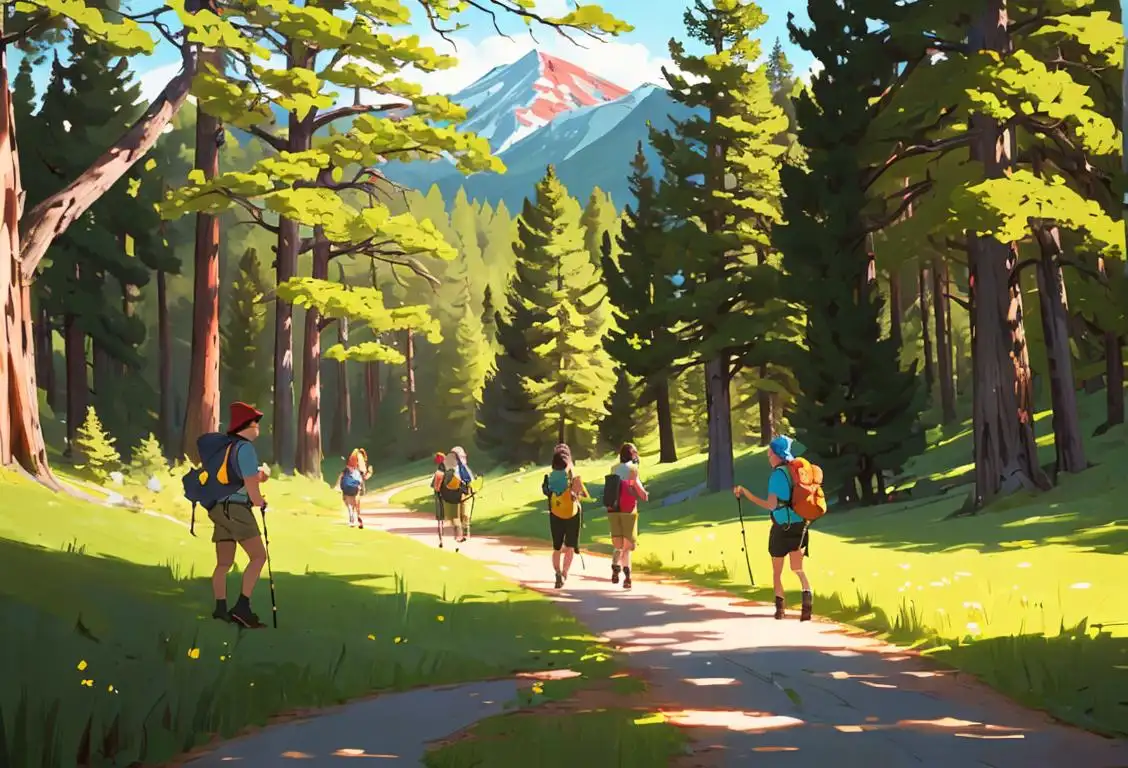National Read A Road Map Day

Hey there, fellow adventurers! It's time to dust off those old maps and get ready for an epic journey because National Read a Road Map Day is here!
When is Read A Road Map Day?
It's national read a road map day on the 5th April.
Get ready to take the scenic route:
Picture this: You're cruising down the road, hair blowing in the wind, when suddenly, your GPS dies! Dun dun dun! Panic sets in as you realize you're totally lost in the middle of nowhere. But fear not, my friend! National Read a Road Map Day is your chance to unleash your inner explorer and navigate the good old-fashioned way.
Before smartphones and navigation apps became our trusty sidekicks, road maps were your best friend on any journey. They were like magical treasure maps that knew all the secret routes, scenic detours, and hidden gems. And guess what? They still are!
Reading a road map is more than just finding your way from point A to point B. It's an art form. It's about understanding the twists and turns, the symbols and legends, and the sheer joy of figuring out a puzzle. Plus, it'll make you look extra cool and mysterious when you confidently unfold that map and declare, 'I've got this.'
Unleash your inner adventurer:
So, how do you celebrate National Read a Road Map Day? Well, it's as easy as finding a map, grabbing a cup of coffee or tea, and channeling your inner Christopher Columbus. Here are a few tips to make the most of this special day:
- Plan a road trip: Choose a destination that's been on your bucket list and start mapping out your route. Embrace the thrill of discovery as you uncover hidden gems along the way.
- Explore your local area: You don't have to travel far to embark on an adventure. Grab a map of your hometown or city, and set out to explore places you've never been before. You might be amazed at what you find.
- Learn map-reading skills: Can't tell a legend from a contour line? Take this opportunity to learn the art of navigation. Dive into online tutorials or find a book on map-reading to enhance your skills.
- Host a map-themed game night: Gather your loved ones for a fun-filled evening of map-related games. From scavenger hunts to map quizzes, there's no shortage of entertainment for the map lover in your life.
Did you know?
Here's a fun fact for you: Did you know that Google Maps started as a small-scale project called 'BackRub'? Thankfully, they decided to go with a less... uh, questionable name in the end. Can you imagine asking someone for directions and saying, 'Hold on, let me BackRub it'?
History behind the term 'Read A Road Map'
1900
The Birth of Automobiles
With the rise of the automobile at the turn of the 20th century came the need for a new tool to navigate the ever-expanding road network. As roads became more complex, travelers needed a way to find their way from point A to point B. This marked the beginning of road maps, which provided visual representations of road networks, landmarks, and distances between destinations.
1914
Rand McNally Introduces the First Road Atlas
In 1914, the renowned map publishing company, Rand McNally, released the first ever road atlas. This groundbreaking publication contained detailed maps of various regions, providing travelers with a comprehensive resource to plan their journeys. The road atlas quickly gained popularity among motorists, becoming an essential companion for road trips across the United States.
1930
The Advent of Turn-by-Turn Directions
The introduction of turn-by-turn directions revolutionized navigation for motorists. In 1930, a mechanical device known as the "Turn-by-Turn Indicator" was invented by Alfred Arnold, enabling drivers to receive instructions for each turn along their route. This device, later replaced by voice-guided GPS systems in modern cars, relied on a series of road maps to provide accurate directions to drivers.
2000
Digital Mapping and Global Positioning Systems (GPS)
The rise of digital technology brought a tremendous shift in the way people navigate. The widespread availability of GPS devices and digital mapping software in the early 2000s made it easier than ever for travelers to read road maps. With GPS, interactive maps became dynamic, realtime tools that provided precise location information and step-by-step directions. Today, digital road maps are widely accessible on smartphones, tablets, and in-car navigation systems.
Did you know?
Did you know that Google Maps started as a small-scale project called 'BackRub'?Tagged
fun funny adventureFirst identified
5th April 2015Most mentioned on
5th April 2017Total mentions
755Other days
Read A Road Map Day
Lockdown Day
Find A Rainbow Day
Scoota Day
Park All Day
Buckfast Day
Park For A Day
Park Is Beautiful At Both Times Of The Day
Desert Day
Ride The Wind Day








